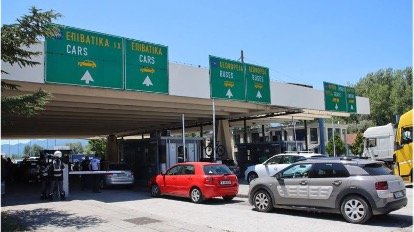Starting 1 January 2025 Romania and Bulgaria have officially joined the Schengen Visa-Free Travel Zone, marking a major step forward in European integration.
This expansion now includes these two nations alongside France, Germany, Italy, Spain, Greece, Poland, the Netherlands, and twenty other countries. With border controls lifted, seamless travel is now possible across 29 nations, benefiting millions of travelers and businesses. Here’s everything you need to know about this historic update and its implications.
Romania and Bulgaria have started the New Year with a monumental achievement—they’re now full members of the European Union’s Schengen zone! This historic step eliminates land border controls with other member states, marking a significant leap in their integration into Europe’s political and economic framework.
The Schengen area stands out as a defining success of European integration. It started in 1985 as an intergovernmental initiative among five EU countries—France, Germany, Belgium, the Netherlands, and Luxembourg—and has since grown to become the largest free travel area in the world. The agreement and subsequent convention were signed in Schengen, a small village in Luxembourg near the borders with France and Germany, giving the area its name.

Schengen Zone Overview
Spanning over 4 million square kilometers and housing nearly 420 million residents, it comprises 25 of the EU’s 27 member countries, alongside Iceland, Liechtenstein, Norway, and Switzerland. It includes 25 of the 27 EU member states, plus Iceland, Liechtenstein, Norway, and Switzerland. Croatia became the 27th EU member to fully join the Schengen area in 2023, and now, with the inclusion of Romania and Bulgaria, the area continues to symbolize European unity and cooperation.
Schengen members currently are: Austria, Belgium, Bulgaria, Croatia, Czechia, Denmark, Estonia, Finland, France, Germany, Greece, Hungary, Iceland, Italy, Latvia, Lithuania, Liechtenstein, Luxembourg, Malta, The Netherlands, Norway, Poland, Portugal, Romania, Slovakia, Slovenia, Spain, Sweden, and Switzerland.
A Day of Celebration
January 1, 2025, marked a day of celebration. Bulgarian Prime Minister Dimitar Glavchev hailed it as a “historic moment” from Kulata, a town on Bulgaria’s border with Greece. Romanian Interior Minister Cătălin Predoiu and Bulgarian Interior Minister Atanas Ilkov joined ceremonies at major crossings such as Giurgiu-Russe (between Romania and Bulgaria) and Nadlac-Csanadpalota (between Romania and Hungary). At these locations, barriers were lifted, symbolizing the removal of land border controls and the start of a new era of seamless connectivity.
Benefits and Functionality of the Schengen Zone
The Schengen area is a game-changer for free movement. It allows more than 400 million people to travel across member countries without internal border checks, except in cases of specific threats. This seamless travel is governed by the Schengen Borders Code, which ensures harmonized external border controls and defines clear criteria for maintaining security.
Every day, approximately 3.5 million people cross internal borders for work, study, or visiting family and friends. Europeans make an estimated 1.25 billion journeys within the Schengen area annually, benefiting not only individuals but also the tourism, cultural, and economic sectors.

Economic Impact
The Schengen area brings significant economic advantages. It underpins the EU’s single market, reducing logistical barriers and cutting costs for businesses. By fostering cross-border cooperation, it has become a driving force behind the region’s economic growth.
For Romania and Bulgaria, the benefits are especially promising. Romania, known for its Carpathian Mountains, medieval castles in Transylvania, and vibrant cities, is poised to attract more tourists and investors. Bulgaria, famous for its Black Sea coastline and cultural heritage, is set to strengthen its position as a key transit hub and tourist destination. The removal of border checks also makes both nations more attractive for trade and investment.
Enhanced Security Through Cooperation
While the Schengen area emphasizes free movement, it also prioritizes security. Member states collaborate closely to combat organized crime, terrorism, human trafficking, and illegal migration. Key aspects of this cooperation include:
- Improved communication between police forces across borders.
- Cross-border surveillance and hot pursuit of suspects.
- Mutual operational assistance and direct exchanges of information between authorities.
This integrated approach ensures that the abolition of internal border controls does not compromise safety, making Schengen a model of balancing freedom and security.
Romania and Bulgaria’s Journey to Schengen Membership
The path to Schengen membership was anything but smooth for Romania and Bulgaria. Both countries joined the EU in 2007 and fulfilled the necessary criteria for Schengen entry by 2010. However, their accession was delayed for over a decade due to political concerns, primarily related to migration and welfare pressures in wealthier EU countries.

Austria played a key role in blocking their entry, vetoing their inclusion from 2022 onwards. After years of negotiation and addressing these concerns, Austria finally lifted its veto in December 2024. Air and sea border controls with Romania and Bulgaria were removed in March 2024, with land controls following on January 1, 2025.
How Countries Join the Schengen Zone
Becoming part of the Schengen area requires meeting strict conditions:
- Adopting the Schengen acquis, which includes rules on border controls, visas, and police cooperation.
- Taking responsibility for securing external borders on behalf of the zone.
- Ensuring robust cooperation with other Schengen countries to maintain high levels of security.
- Connecting to and effectively using the Schengen Information System (SIS) for data sharing and security coordination.
New members must pass a series of evaluations to prove their readiness. Once deemed prepared, unanimous approval from all Schengen countries is required, following consultation with the European Parliament.
Challenges and Future of Schengen
While the Schengen zone has been a symbol of European unity, it’s not without challenges. Internal border controls were reintroduced temporarily between 2020 and 2022 due to the COVID-19 pandemic, and countries like Germany and the Netherlands have occasionally reinstated checks in response to migration or security concerns. Most recently, the Netherlands introduced additional border controls with Germany and Belgium.
Romania and Bulgaria will need to navigate these complexities while maintaining the principles of free movement. Their ability to manage migration and security will be critical to reinforcing trust among other Schengen members.
Looking Ahead: Strengthening European Integration
The inclusion of Romania and Bulgaria in the Schengen zone is more than just a practical development; it’s a testament to the European Union’s commitment to fairness and unity. By welcoming these two countries, the EU has demonstrated that it values inclusivity and equal opportunities for all its members.
For travelers, this expansion means easier access to Europe’s diverse cultural and natural treasures. For businesses, it promises enhanced connectivity and reduced logistical barriers. And for the EU, it’s a step forward in building a more integrated, resilient, and cooperative Europe.
As the Schengen zone continues to grow, its future success will depend on balancing the ideals of free movement with the realities of security and migration management. Romania and Bulgaria’s journey serves as an inspiration for the region’s potential and a reminder of the collective strength of European unity.




